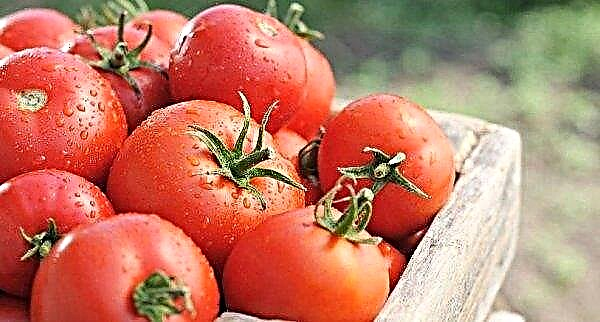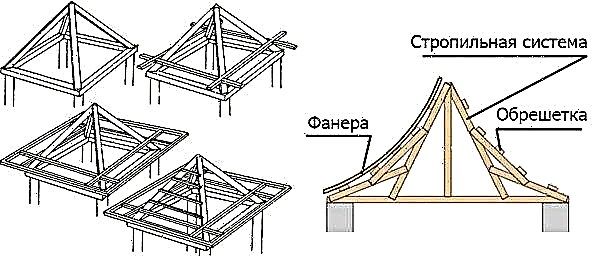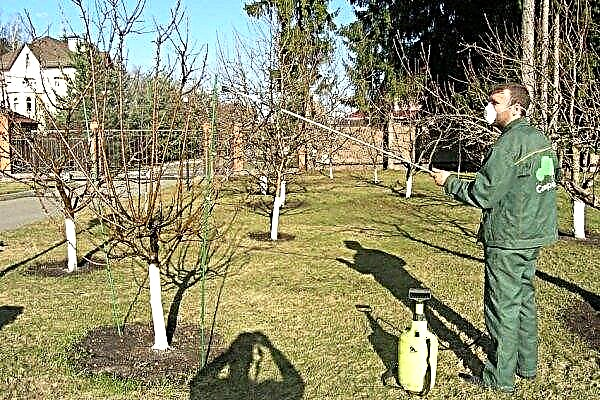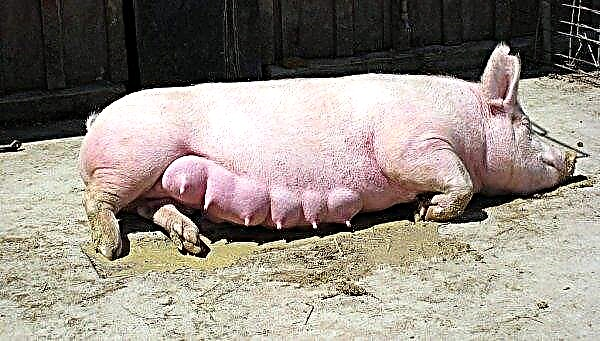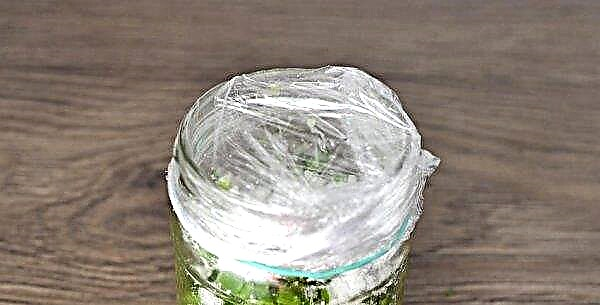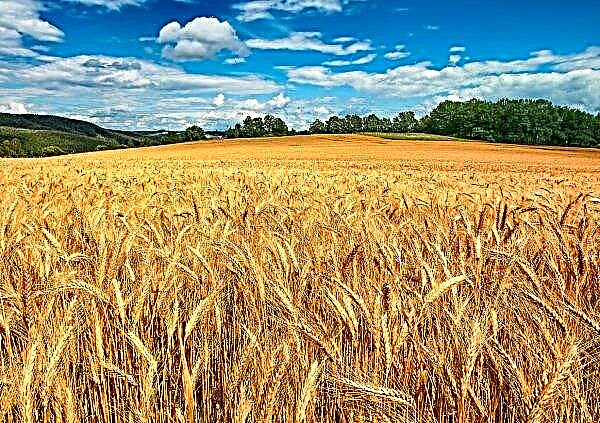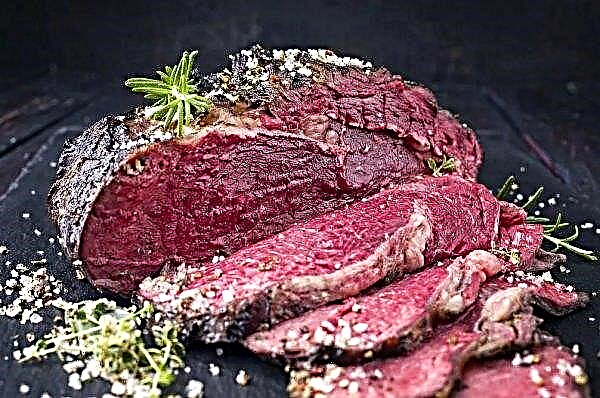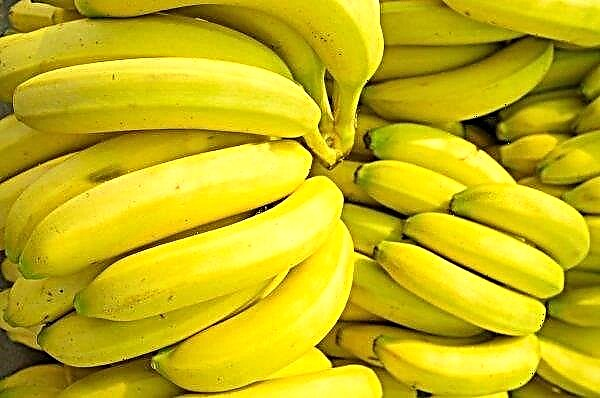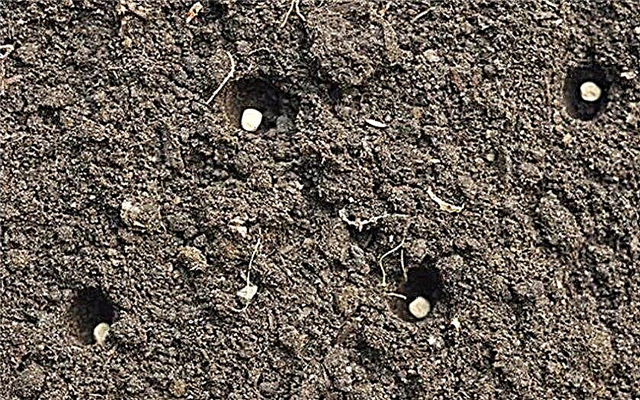Among gardeners, the Primadonna F1 variety of tomatoes is especially popular. Many were able to verify from personal experience that this variety fully justifies its high-profile name. Learn about the nuances of its cultivation and care.
Grade description
The main characteristics of tomatoes include the following:
- bushes of a determinant type, about 130 cm high; have large leaves;
- since the bushes are high enough, they need to be tied up;
- plants need pinching;
- Tomatoes begin to ripen 90–95 days after seed germination;
- fruits of a rounded, often elongated shape;
- the skin of tomatoes is thin, soft and shiny;
- Tomatoes have a sweetish flavor with pronounced sourness.

Advantages and disadvantages
- Among the main advantages of the variety are the following:
- early ripeness;
- high productivity;
- plants are resistant to bad weather conditions;
- fruits have universal application;
- tomatoes are not exposed to most tomato diseases;
- the fruits are large, fleshy, they can be stored for a long time;
- also the fruits tolerate transportation well.
Self-growing seedlings
This variety is grown by the seedling method, since it is it that allows you to get the largest possible yield at the end of the season.
Optimum timing for sowing
It is recommended to sow seeds for seedlings in late March or early April.
Did you know? Wild tomatoes grow in South America. Their weight does not exceed 1 g.
The soil
The soil must be well ventilated and fertile. To prepare it, mix humus, earth, peat and sand in a ratio of 1: 1: 0.5: 0.5. You can also add ash to the soil (200 g per 10 kg). To disinfect the soil, it is enough to pour it with a solution of potassium permanganate (3 g per 10 l of water).
Capacity for growing
Take care that the container is shallow and wide. Crates are best; peat tablets or shallow individual cups can also be used. If you choose the last option, you will not need to pick plants.
Seed preparation
Before sowing, the seed is disinfected. The seeds are soaked for several hours in a 1% solution of potassium permanganate (1 g per 1 liter of water). After this procedure, they are washed with warm water. To provide quick seedlings, gardeners often soak the seeds also in a growth stimulator. To do this, you can use the drug "Zircon" (2 drops per 300 g of water). Seeds are kept in it for 24 hours. This drug has a beneficial effect on the formation of the root system of tomatoes.
Important! After the first leaf appears, a pick is carried out. This procedure promotes the active development of the plant root system.
Sowing seeds
To sow in the ground, first make grooves at a distance of 5 cm. Next, seeds are laid out at a distance of 2 cm from each other and they are covered with a 2 cm layer of soil. After that, the soil is watered with warm water and covered with a film. It is best to keep crops at 25 ° C. After seedlings, the film is removed.
Seedling Care
Seedlings do not need to create any special conditions. It must be kept at a good level of illumination and at room temperature. Shoots are usually friendly and strong, so even a beginner gardener will cope with growing seedlings of this variety. Watering should be moderate. Water the seedlings when the topsoil is dry.
Seedlings need fertilizing with mineral fertilizers. It is carried out every 2 weeks. For this, you can use ready-made complex top dressings such as Diammofoska, Ammofos or Nitroammofoska according to the instructions. You can prepare fertilizer by mixing 1 tbsp. urea spoon, 2.5 tbsp. tablespoons of superphosphate and 2 teaspoons of potassium sulfate.
Did you know? The word "tomato" was invented by the French. And "tomato" comes from the Italian word Tomatowhich means "golden apple".
Seedling hardening
Two weeks before the planned planting of seedlings to a permanent place, it is tempered so that it quickly adapts to environmental conditions. Plants take out every day to fresh air - first for half an hour, gradually increasing the time to several hours.
Planting seedlings in a permanent place
Seedlings are planted in a permanent place at the age of 60 days. An indicator of the readiness of seedlings for transplantation is the presence of 7 leaves on each plant. Tomatoes should be planted at a distance of 50 cm between the bushes. The best predecessors of tomatoes of this variety are carrots, cabbage, onions and legumes. Areas of land where potatoes, peppers and eggplants were not suitable for tomatoes.
Outdoor Care
Consider how to properly care for the primadonna tomatoes.
Watering
When it is not hot outside, it is enough to water once a week. If the weather is hot, increase the watering level to 2-3 times a week, depending on the level of heat. Water the plants directly under the root with warm water. During fruiting, watering is more frequent.
Top dressing
Recommended Reading

Great for this variety is top dressing with infusion of mowed grass. To do this, 1/3 of the barrel is filled with grass, filled with water, covered tightly and left for a week. Pour tomatoes with such infusion every 7-10 days.
Be sure to apply mineral fertilizers to the soil. This can be done before planting seedlings. In this case, 4 g of potassium, phosphorus and sodium are introduced into the ground.
You can buy fertilizers "Kemira station wagon 2", "Mortar" or "Kemira luxury". Use them according to the instructions. These preparations consist of a whole complex of mineral elements needed by tomatoes. You can prepare a bed for tomatoes from the fall. For this, 1 square. 5 kg of humus, 30 g of superphosphate, 30 g of potassium sulfate are added.
Soil care
Soil care does not require much effort. When weeds appear on the bed, they need to be weeded. After that, it is recommended to loosen the soil. During the season, loosening is carried out 3-4 times. To ensure that the soil is well supplied with oxygen, tomato bushes spud about once a month. This procedure is also useful because in the grooves that remain after it, moisture accumulates and remains, which has a good effect on the vital activity of plants. It is also very useful to mulch the bed. To do this, use straw - it is laid out with a layer of 15 cm. After a few days, the thickness of the layer will decrease to 5 cm. It is not necessary to report the straw.
Find out why tomatoes fall in the greenhouse and what to do.
Shaping and tying a bush
Once every two weeks, it is recommended to carry out partial pinching of tomatoes. A bush is formed into one stem: from the bottom, 1 side shoot is left, and the rest is removed. Also, plants need a garter. For this, individual supports or vertical trellises are used. Garter should be made of synthetic materials - otherwise the stem may begin to rot.
Harvesting
Harvested approximately 90–95 days after seed germination. Next, the tomatoes should be stored in a dark place at room temperature. Avoid exposing the fruit to low or high temperatures. Tomatoes can be transported at any distance. Dense and fleshy pulp prevents damage to the fetus.
The fruits are wonderfully suitable for fresh consumption. Their pleasant taste will be the highlight of any vegetable salad. Tomatoes can also be subjected to heat treatment, without worrying about taste, because they are not lost during cooking. In addition, the effect of high temperature does not affect the shape, therefore, during conservation, the tomatoes do not crack, they retain elasticity.
Primadonna F1 tomatoes are an excellent choice for any gardener, because they do not have obvious shortcomings. If you follow all the recommendations given in this article, they will please you with a good harvest.


